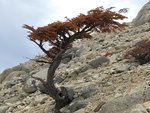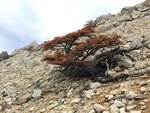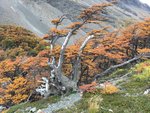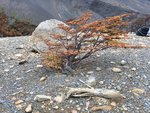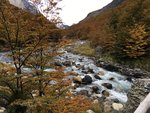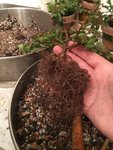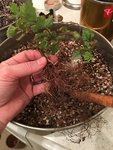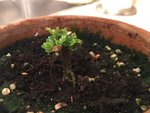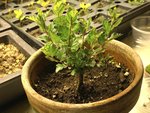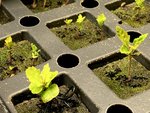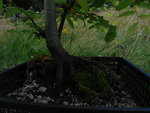AnthonyB
Sapling
Posting in the Toronto Bonsai Society sub forum started recently to help us all out as we distance ourselves into bored oblivion but certainly welcome any input from others in the Bonsai Nut community. Parts of this post are excerpted from a similar thread I started a few weeks back on Mirai but I'm updating with some new pics and will post those separately.
I fell in love with these trees after a visit to Patagonia a couple years ago. The first set of pics are a few from that trip along a hike into the mountains in Torres del Paine National Park. At the time of the trip I thought all of those in the pics were N antarctica but I am pretty certain that the rough barked ones are actually N pumilio and N antarctica are the smooth barked specimens.
I have successfully grown some N antarctica seedlings from seed after a couple false starts and have learned a few of their foibles along the way (ericaceous soil is a must for eg) but wondering if anyone has other tips. I have seeds from other Nothofagus species (dombeyi, pumilio, obliqua, alpina, cuninnghamii, gunnii) currently stratifying or planted. So far this season I've also had seedlings started with two obliqua variants and also alpina. Have about a dozen antarctica year old seedlings, another few dozen just germinated, along with about a dozen obliqua and 3 alpina.
I'm going to refer to them all as Nothofagus ('False Beech') here but actually there has been new genetic analysis that as divided that previous grouping out into new subgenera so technically I should be referring to Lophozonia cuninnghamii, alpina and obliqua and Fuscospora gunnii.
With their tiny leaves, fine ramification and tendency for twisted, gnarly growth, one would think they would be popular as bonsai material but it's pretty hard to find good specimens, even online. There are a few links in the BN forums here to some interesting trees though:
This one from Dennis Vojtilla (note it was mislabeled in the thread as a hawthorn)
@grouper52 posted three trees back in 2007 (1, 2, 3)
@barrosinc posted a N dombeyi and also referenced receiving an obliqua but I'm not sure if any pics of that one ever got posted
@AJL posted a collected tree from Chile (not sure if it was an antarctica, looks like it might be an obliqua to me)
There was also an interesting post of a N antarctica trunk chop that looks like it might have been unsuccessful
Updates on all of the above, pics of other trees, thoughts on growing and styling them would be most welcome!
I fell in love with these trees after a visit to Patagonia a couple years ago. The first set of pics are a few from that trip along a hike into the mountains in Torres del Paine National Park. At the time of the trip I thought all of those in the pics were N antarctica but I am pretty certain that the rough barked ones are actually N pumilio and N antarctica are the smooth barked specimens.
I have successfully grown some N antarctica seedlings from seed after a couple false starts and have learned a few of their foibles along the way (ericaceous soil is a must for eg) but wondering if anyone has other tips. I have seeds from other Nothofagus species (dombeyi, pumilio, obliqua, alpina, cuninnghamii, gunnii) currently stratifying or planted. So far this season I've also had seedlings started with two obliqua variants and also alpina. Have about a dozen antarctica year old seedlings, another few dozen just germinated, along with about a dozen obliqua and 3 alpina.
I'm going to refer to them all as Nothofagus ('False Beech') here but actually there has been new genetic analysis that as divided that previous grouping out into new subgenera so technically I should be referring to Lophozonia cuninnghamii, alpina and obliqua and Fuscospora gunnii.
With their tiny leaves, fine ramification and tendency for twisted, gnarly growth, one would think they would be popular as bonsai material but it's pretty hard to find good specimens, even online. There are a few links in the BN forums here to some interesting trees though:
This one from Dennis Vojtilla (note it was mislabeled in the thread as a hawthorn)
@grouper52 posted three trees back in 2007 (1, 2, 3)
@barrosinc posted a N dombeyi and also referenced receiving an obliqua but I'm not sure if any pics of that one ever got posted
@AJL posted a collected tree from Chile (not sure if it was an antarctica, looks like it might be an obliqua to me)
There was also an interesting post of a N antarctica trunk chop that looks like it might have been unsuccessful
Updates on all of the above, pics of other trees, thoughts on growing and styling them would be most welcome!


